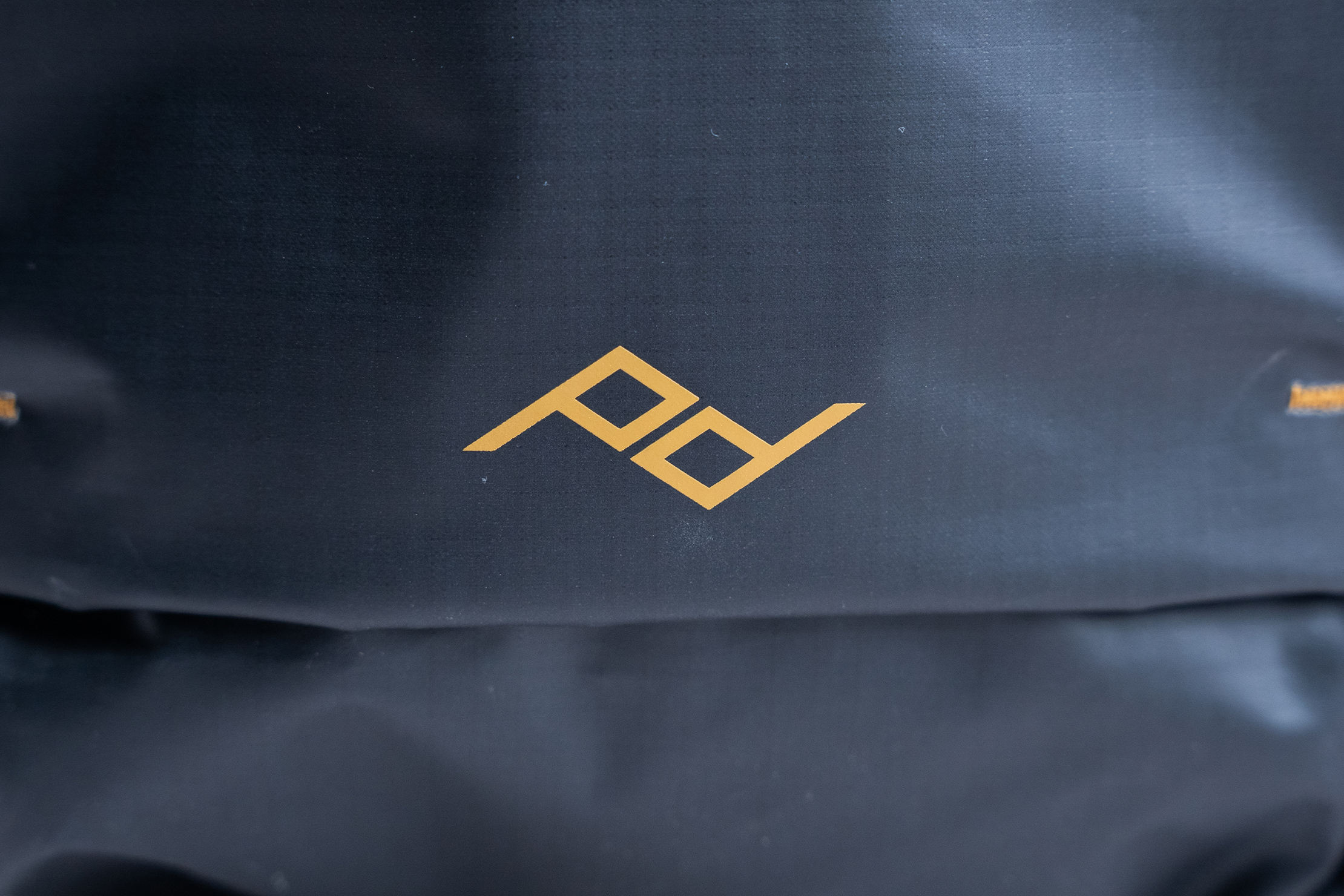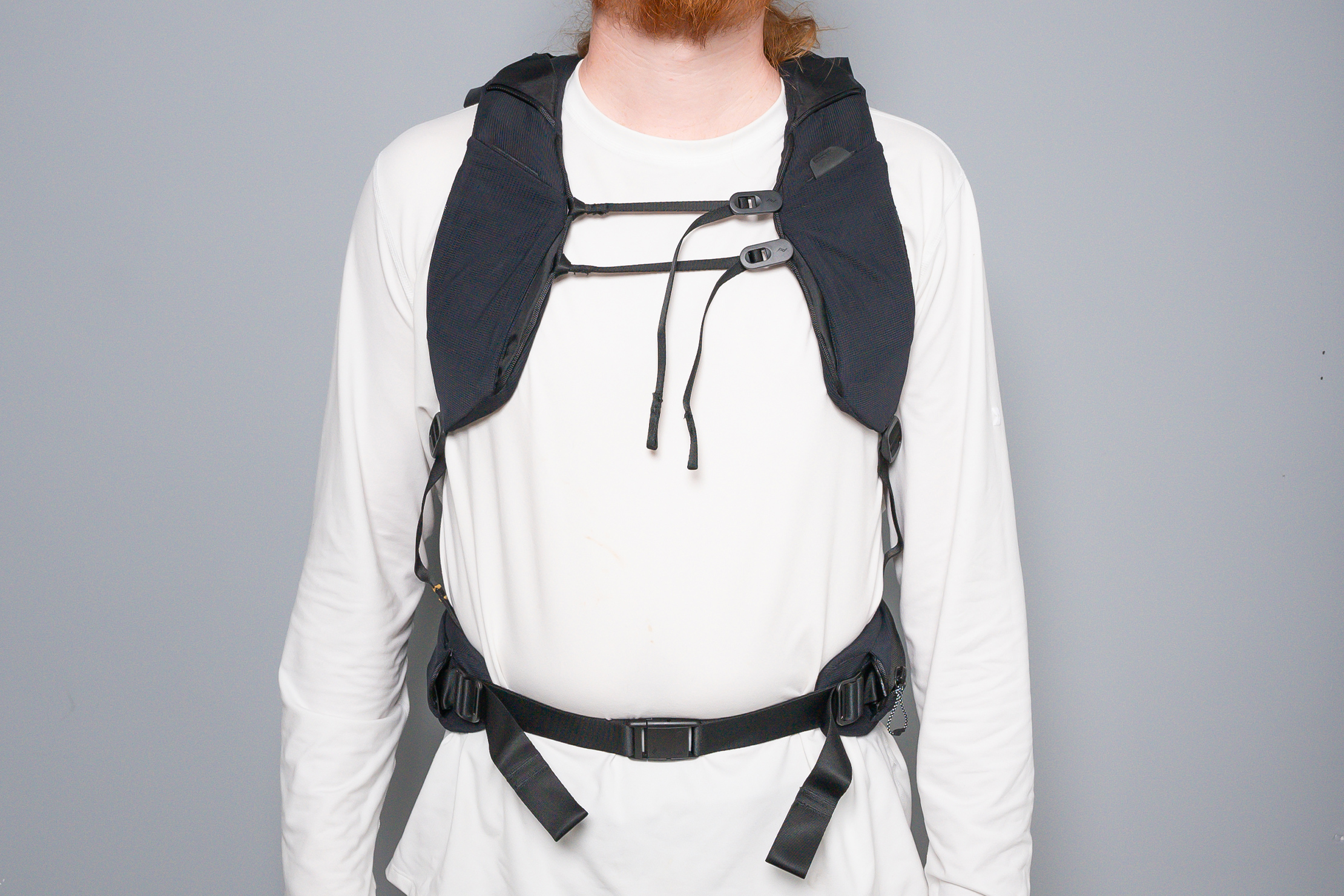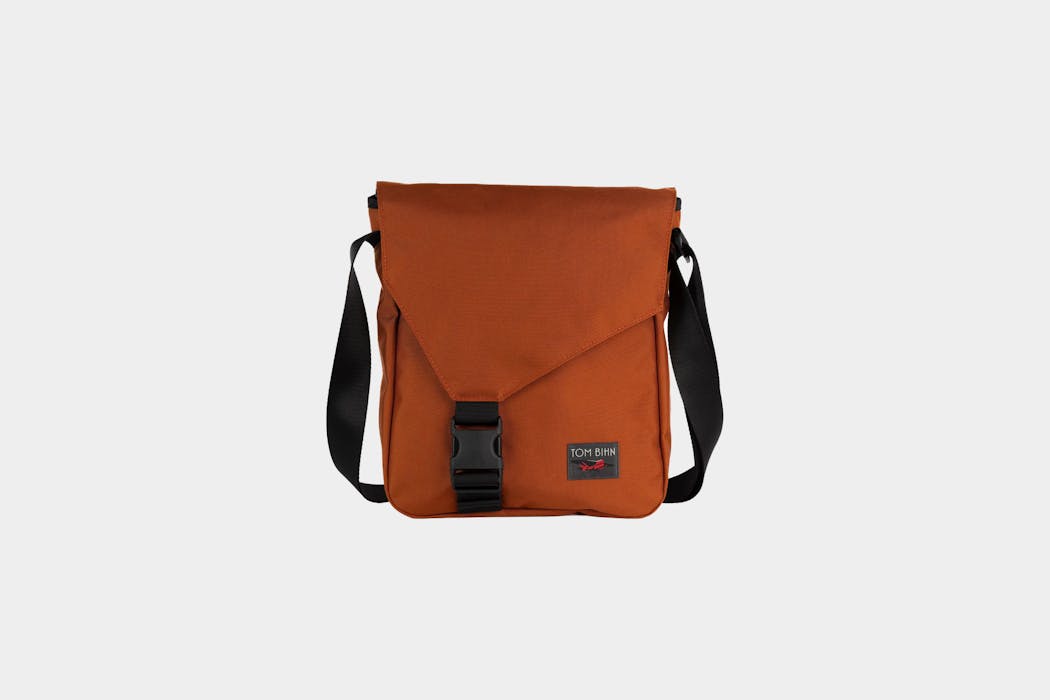Peak Design Outdoor Backpack 45L Review
Thanks to an innovative design and multiple access points, the Peak Design Outdoor Backpack 45L can be used as a camera backpack, travel pack, or combination.
Our Verdict
Save time. Get access to brief summaries of our reviews so you can browse and make decisions more efficiently.
Pros
- Lightweight, durable, and highly water-resistant materials (plus a rainfly add-on if desired)
- The main compartment is massive but easy to organize and has two points of access
- You can wear it all day without getting sore thanks to the beefy harness system
Cons
- The rolltop closure and compression cord system are challenging to get used to and can slow down access
- The light colorway is semi-transparent, so some gear is visible from the outside
- Two sternum straps add security, though they can be tedious to undo frequently
Technical Details
-
Capacity
45l
maximum size | 34.5L minimum size
-
Weight (lb)
3.97 lb (1.8 kg)
-
Dimensions
23 in x 15 in x 9 in (58.4 x 38.1 x 22.9 cm)
-
Notable Materials
Ripstop Nylon, Recycled Materials, Thermoplastic Polyurethane (TPU), Meets bluesign® Criteria, Unbranded Hardware, Unbranded Zippers
-
Manufacturing Country
Indonesia
-
Laptop Compartment Size
16"
Compatible with up to 3L hydration
-
Warranty Information
Buying Options
Full Review
Get up to 10% off Peak Design • Join Pack Hacker Pro
The Peak Design Outdoor Backpack 45L is a step in a different direction for a brand known for innovative ways to carry camera gear while traveling. The pack features many things we’re used to seeing from Peak Design and a few we’re experiencing for the first time. Will the old mesh with the new, or will we be left wanting to go back to the Everyday Backpack? Let’s dive in!
External Components
The new Outdoor Pack’s primary bag material is Terra Shell 210D ripstop nylon. It’s bluesign®-approved and PFAS-free, a solid shout from a sustainability perspective. Recycled materials ensure more artificial materials remain out of the landfill, and sustainably sourced fabrics are better for the environment and supply chain. This material in particular is lightweight and a little crunchy; however, it isn’t as noticeable as other recycled fabrics we’ve dealt with.

The zippers are unbranded, but we’ve come to expect this from Peak Design in recent years. Whereas we typically like to see YKK or a brand with a similar reputation, we haven’t had any issues with Peak Design’s zipper technology in this era. If we do, you’ll be the first to know!
There is a mixture of metal and plastic hardware throughout the bag, some of which is from Woojin. This is one of the best brands in the business, so it’s a solid shout to see them used here. Some of the buckles on this new line are quick-release, which is super handy. They don’t pop open when you don’t want them to; however, they’re easy to open in a flash should you need to get the backpack off quickly. If you’re using the bag for camera gear, it is helpful to try and snag a photo at a moment’s notice.

The side pockets are one of the biggest perks of this pack’s exterior. There are two on each side: one taller and a shorter one. The bigger one works for more oversized items, like a tripod (it fits Peak Design’s model nearly perfectly without the need for gear loops to tie it down), a big water bottle (think 48-ounce Nalgene), or other gear. As you might have guessed, the smaller pocket works well for shorter gear, though you can stow taller items here, too. If you already have something larger in the other pocket, like a tripod, you can stow a thinner, tall item in the other pocket using a strap, as there are attachment loops throughout the pack, including around the front face.
Since we’re talking about attachment loops, we should stress that they’re everywhere on this pack. Every nook and cranny has small tabs to which you can attach things. Best of all, they stay out of your way if you aren’t using them, and, for the most part, you can’t even tell they’re there. As much as we love the functionality of a MOLLE/PALS webbing system, it isn’t the vibe every traveler wants. Whereas you can’t attach quite as much gear to Peak Design’s system, we’ve found it nearly just as helpful. You can use them to hang items off your pack, cinch things like trekking poles down, or compress the backpack.

The pack’s top handle is minimalistic and doesn’t feature padding or aeration. However, this would have added unnecessary weight and bulk to a bag trying to eliminate both. If you often carry your pack with one hand, this might be an issue, though we didn’t find it to be a dealbreaker.
In addition to a highly water-resistant and durable external shell, you can purchase a rain fly separately. It retails for $29.95, which isn’t a ton, especially considering this pack is fairly priced. This adds an impenetrable layer to the pack, which works well for climates with torrential downpours or if you are a worrier and want extra peace of mind. If you’re using the bag as a camera bag, we recommend getting it, as you want to ensure your expensive gear stays dry!
Fit Notes

The harness system is highly adjustable and works with various torso lengths. The top of the strap attaches using a metal G-hook, and it can be connected to the pack in four places so you can find one that works for you and your body type. Peak Design has a sizing guide to help you with this, so you aren’t entirely in the dark. Additionally, there are load lifters here, which help shift around weight so you can stay comfortable on a long hike around the city or up the side of a mountain.
The pack has a metal frame that runs around its entire perimeter. You can remove it if you want to; however, this helps spread the weight around your body instead of allowing it to pile up in a few areas. You can wash this pack in the machine, but you must remove the frame first.

The back panel is very well-padded and aerated. While wearing it, the materials feel like sitting on a comfy chair in the living room. Seriously, this thing packs a punch, even on long days of exploring or a long bicycle ride, which is how our primary tester got miles in testing this pack. The padding keeps you comfortable, and the aeration ensures you stay dry. There will be sweat, but less than there would be if there weren’t as much aeration as Peak Design packed into this thing.
The shoulder straps are very dense but not so large that they’re claustrophobic. They’re well aerated, too, to ensure you don’t get too sweaty on your chest. The straps have attachment points for various gear, can be used to hold a Peak Design Capture Clip (to mount your camera), and have mesh pockets on either side for quick-use gear like electronics or snacks.
There are two sternum straps, which is unique. They feel very comfortable and sturdy; however, attaching and removing them takes longer since there are two. Still, we dig the design, as it adds more connection points between the sternum straps, which feels more stable and helps distribute the weight more evenly. If you typically don’t like using a sternum strap, you likely won’t enjoy using two of them. They’re easily removable, so that solves that issue!

The hip belt is also removable, adjustable, and storable. We dig this because if you don’t want to use it, you can remove it altogether. Or, if you want to use it later, you can stow it away. Or, if you’re like our primary tester, you can wear it all the time to ensure that you stay as comfortable as possible at any moment. The straps are well-designed and, as mentioned, adjustable. Plus, there’s a ton of extra strap length, so it’ll work with most body types.

Additionally, the hip belt has pockets on either side crafted from mesh. The left iteration has a zipper, handy for locking down the gear you want quick access to but not lose, like an inhaler. There is little protection here, so ensure anything important is in a protective case should you fall forward. The right side has no topper; however, the mesh easily holds onto most gear.
Inside The Pack
The pack has two front pockets, one on the left and the other on the right. The pockets are identical, with an attachment loop inside and no organization to speak of. One has a stretchy key leash, and you can decide which side you want this to live on. You can access these pockets while wearing the pack, though it can be challenging if you have range-of-motion issues in either arm. Our primary tester has issues with their right arm, so accessing the pocket with that arm is more challenging. The other side wasn’t an issue.

Before diving into any other pockets or compartments, we need to cover the primary closure system. This pack is essentially a rolltop, but it goes deeper than that. The top closure has a cinch cord system that ensures it doesn’t unroll and adds functionality. Because of this, you can stow more gear inside, and you don’t have to worry about it coming undone and losing your gear since the cable holds it down. The cinch cord locks in place at any position, so it won’t loosen when you don’t want it to. A tab on the top helps you loosen it when you want to get inside, which is pretty easy to accomplish.
The first compartment you run into after loosening the cinch cord is the kangaroo pocket. This area doesn’t have a topper, though the front panel acts as one when you tighten the cinch cord. You can stow wet items here, as they aren’t inside the bag, like a rain jacket or wet socks after an unexpected rain or river crossing. It shares space with the side pockets, so that’s worth remembering when planning what will go where.

The main compartment is large, expandable thanks to the rolltop, and accessible in two ways. First, it is accessible from the top and secured with magnets to help you get a good fold when rolling the pack closed. You can easily reach items on the top of your pack; however, getting to the bottom of the bag from here is challenging, so Peak Design added another access point.
A zipper around the back panel offers a clamshell-style opening to access gear in the bottom of the main compartment. There are two zippers here, so you can get creative with where you want them to live and how to open this compartment.

This pack is designed to work with Peak Design’s camera cubes, though you don’t have to use it for that purpose. You can stow their large cube in the bottom of the main compartment and use the pack as a camera bag. To do this, take the firm part out of the top of the camera cube, fold up the lid, and stow it beneath the cube. Then, you can access your camera gear from the back panel like a classic camera backpack. You don’t have to commit entirely to using it for camera gear, though, as there’s a room above the cube to stow regular gear, like a tech pouch, packing cubes, and other organizers. Unlike the camera cube, you can use any brand you want. However, the Peak Design ones look pretty sleek when paired with this pack and work well in tandem.
Additionally, you can stow a smaller Peak Design camera cube on top of the larger one if you want to go full photographer. Alternatively, you can stow a smaller one instead of the large one to bring more travel gear for trips that aren’t solely revolving around your camera. Combine different sizes to get the loadout you desire!

The lid of the clamshell access features a laptop compartment, which is essential for any working photographer who needs to meet deadlines (or likes to edit right away). However, some trips don’t require such promptness, and not all users need to bring a computer. In that case, you can use this area for your water bladder. There are loops and a pass-through to make this more effective. If you want to bring a computer and a water bladder, you can stow the former in the laptop compartment and the latter in the kangaroo pocket we mentioned earlier. It isn’t as solid of a storage spot, though it’s still perfectly functional—just be prepared for your water to get a bit more sun and warm up faster.

The only other organization in the main compartment is a small pocket near the top on the backside. It’s crafted from mesh and has a zippered closure, making it a solid spot to lock down the gear you want to keep safe, like your wallet, passport, phone, or smaller tech like a dongle, SD card, or portable hard drive.
Because of the lack of organization, this pack feels naked without segmentation devices like packing cubes, a tech pouch, and other pouches, as mentioned earlier. You don’t have to use them, but it’s much easier to find a charging cable when it’s stowed inside a larger tech pouch than loose inside a pack with an expandable internal volume of 38.5 to 49.5 liters.

One of our favorite features of this pack is that you can use all the pockets, attachment loops, and other additions, even with the bag fully packed out. Even when you’ve got the side pockets completely stuffed, you can still use the attachment loops and kangaroo pockets nearby. Or, if you’ve got the bag stuffed to the gills, you can still easily access your camera gear or laptop. It makes the pack more versatile and easier to use when working, adventuring, or both.
Usage Timeline
Condition: Excellent
- For such a large pack, the materials feel exceptionally lightweight
- The harness system feels capable enough for outdoor adventures and hauling photography equipment
- We’re curious how weatherproof the exterior is
Condition: Excellent
- No issues with the materials, hardware, or liner
- The rolltop closure is hard to get used to; however, it enables you to fit a ton of gear inside the bag
- The harness system is wildly comfortable, and we haven’t had any issues with it snagging on anything while hiking









Get your questions about the Peak Design Outdoor Backpack 45L answered from our team and the Pro Community right here on the page. Plus, join discussions with other members about gear, guides, and more.
Join Pack Hacker Pro or, Sign In